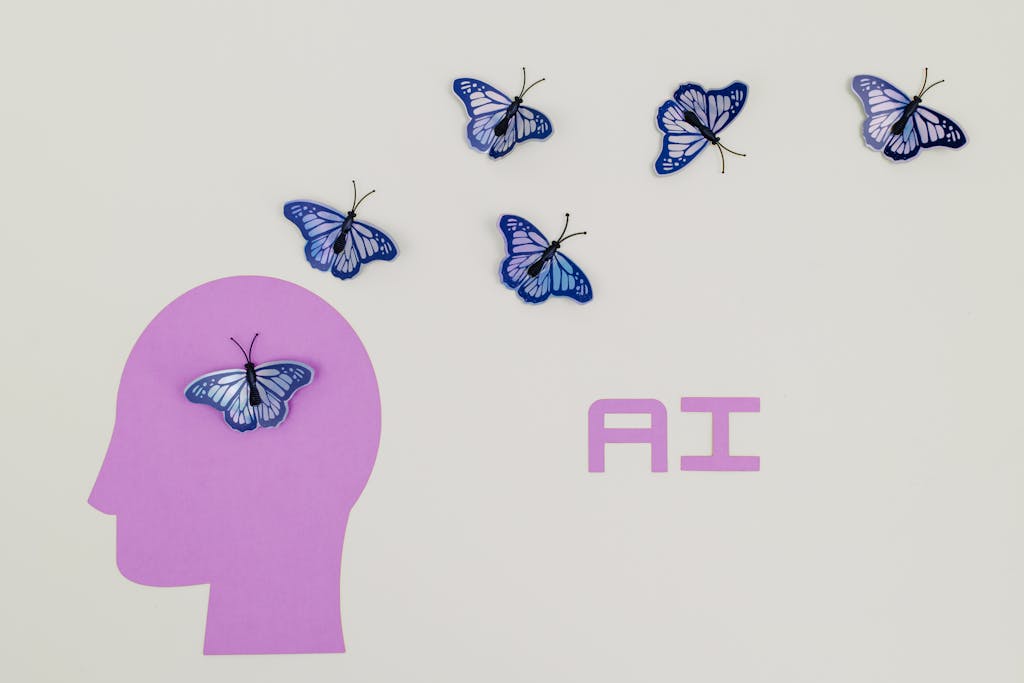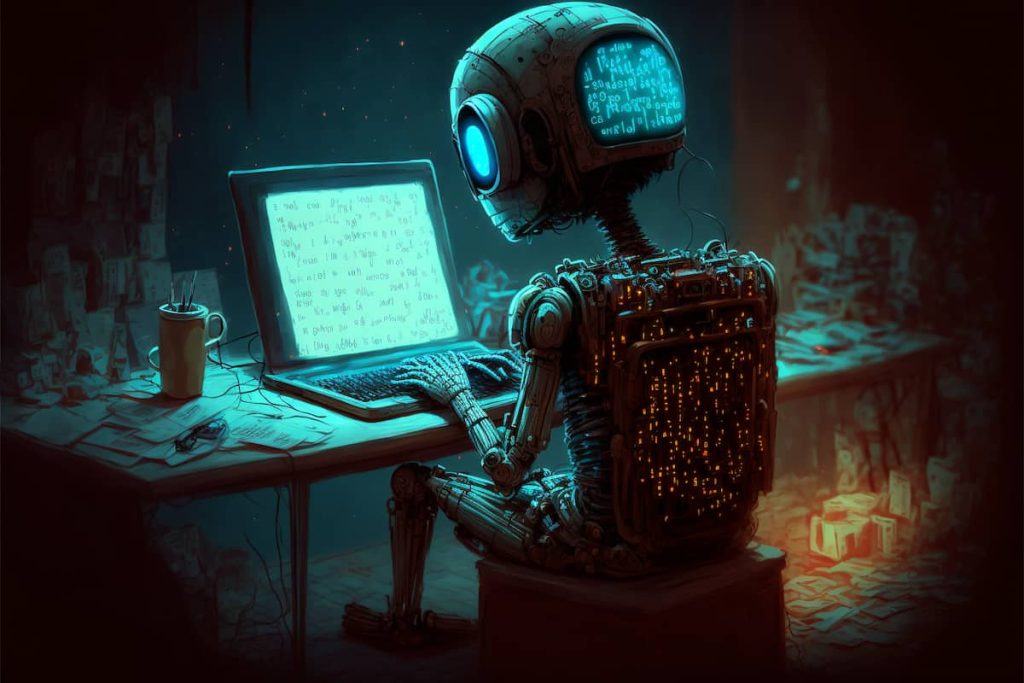AI vs. Human Writers: Striking the Perfect Balance in 2024
Imagine a world where your blog posts write themselves – sounds too good to be true, right?
Well, while approaching 2025, we’re not far off from that reality!
The AI writing revolution is in full swing, and it’s changing the game for bloggers and content creators everywhere.
But hold your horses, folks – before we go all-in on robot writers, let’s take a step back and look at the bigger picture.
As someone who’s been in the trenches of content creation for awhile now, I’ve seen my fair share of writing trends come and go.
But let me tell you, nothing has shaken up the industry quite like AI writing tools.
These digital wordsmiths are popping up faster than you can say “content is king,” and they’re promising to make our lives easier.
But is it really that simple?
CLICK HERE TO GET MY 5 IN 1 PROMPT AND WORKFLOW FOR CREATING ARTICLES ON MY TRAINED AI
Here’s the thing: understanding both AI and human writing capabilities isn’t just important – it’s crucial if you want to stay ahead in the blogging game.
So, buckle up, because we’re about to dive deep into the world of AI vs. human writers.
We’ll explore the good, the bad, and the downright surprising aspects of both.
The Rise of AI in Content Creation

Boy, oh boy, has the world of writing changed since I first started blogging!
I remember the days when I’d sit at my desk, staring at a blank screen, willing the words to come.
Now?
We’ve got AI writing assistants that can whip up a draft faster than I can make my morning coffee.
It all started with simple grammar checkers and predictive text.
But in the last few years?
It’s like someone strapped a rocket to the whole industry!
We’ve gone from basic language models to sophisticated AI writers that can create entire articles on almost any topic.
Take GPT-3, for example.
When it first came out, I thought it was just another overhyped tech fad.
Boy, was I wrong! It’s like having a super-smart writing buddy who never sleeps and never gets writer’s block.
And now there’s even better tools like Jasper AI or Copy.ai – they’re changing the game for content creators everywhere.
But here’s the million-dollar question: are these AI writing tools really all they’re cracked up to be?
Let’s break it down.

Pros of AI Writers
Alright, let’s talk about the good stuff – the reasons why AI writers are making waves in the content world.
First up: speed and efficiency.
Holy moly, these things are fast!
I remember spending hours crafting a single blog post.
Now? AI can spit out a draft in minutes. It’s like going from a bicycle to a sports car.
Then there’s consistency.
You know how sometimes you’re on fire, writing like a pro, and other times it’s like pulling teeth?
AI doesn’t have those ups and downs.
It’s Mr. Reliable, delivering the same quality day in, day out.
How about availability?
Writer’s block at 3 AM? No problem!
Your AI writing assistant is ready to go, 24/7. It’s like having a night owl and an early bird rolled into one.
Cost-effectiveness is another biggie.
Believe me, I’ve crunched the numbers.
Compared to hiring a team of writers, AI tools can be a real money-saver.
Oh, and did I mention languages?
These AI writers are like the United Nations of content creation.
They can write in multiple languages without breaking a sweat.
Lastly, let’s talk data. AI tools can analyze trends and suggest content ideas based on what’s hot.
It’s like having a crystal ball for your content strategy!
I love using Semrush for this one.
Cons of AI Writers
Now, don’t get me wrong – AI writers aren’t all sunshine and rainbows.
They’ve got their fair share of quirks and drawbacks.
Let’s talk about: the human touch.
One time I used an AI to write a heartfelt piece about overcoming challenges.
Let’s just say it came across about as warm and fuzzy as a robot reading a phone book.
AI struggles with empathy and emotional nuance – something us humans excel at.
Then there’s the accuracy issue. I learned this the hard way when I used an AI to write about recent events.
It confidently spouted “facts” that were outdated by several years!
AI can’t browse the web in real-time, so it’s working with potentially outdated info.
Creativity is another sticking point.
Sure, AI can combine existing ideas in new ways, but true, original thinking?
That’s still our domain, folks. I’ve yet to see an AI come up with a truly groundbreaking idea that wasn’t somehow based on existing content.
Context and nuance are also tricky for AI.
I aked AI to write a humorous piece about a sensitive topic.
The result?
Let’s just say it missed the mark by a mile and could have landed me in hot water if I’d published it without reviewing.
Lastly, there are ethical concerns.
Plagiarism is a real risk if the AI isn’t properly trained or used responsibly.
Plus, there’s the whole question of disclosure – should we tell readers when content is AI-generated?
It’s a ethical minefield, I tell ya!
Advantages of Human Writers

Now, let’s give a shout-out to us flesh-and-blood writers.
We might not be as fast as AI, but we’ve got some serious advantages up our sleeves.
Creativity and original thinking?
That’s our jam!
CLICK HERE TO GET MY 5 IN 1 PROMPT AND WORKFLOW FOR CREATING ARTICLES ON MY TRAINED AI
I can’t count the number of times I’ve had a eureka moment in the shower or while walking my dog.
AI can’t replicate that spark of inspiration that comes from lived experiences.
Emotional intelligence is another biggie.
We can read between the lines, understand subtext, and connect with readers on an emotional level.
Then there’s the ability to understand complex contexts. I write lots of articles about Utah marathons that required understanding the city and running routes.
An AI would have struggled to grasp all those subtle dynamics.
Critical thinking and analysis?
That’s all us, baby!
We can look at information, question it, and draw unique conclusions.
I’ve lost count of the times I’ve started researching one topic and ended up with a completely different angle because I was able to think critically about the information.
Adaptability is our middle name.
Trending topic pops up?
We can pivot and create timely, relevant content on the fly.
AI is still playing catch-up when it comes to real-time trends and current events.
Finally, let’s talk about connection.
There’s something special about knowing a real person is behind the words you’re reading. It builds trust and loyalty in a way that AI-generated content just can’t match.
Drawbacks of Relying Solely on Human Writers

Now, I’ve been singing our praises, but let’s be real – we humans aren’t perfect either.
Relying solely on human writers comes with its own set of challenges.
Time is a big one.
I can’t tell you how many deadlines I’ve sweated over, typing frantically into the wee hours.
Writing quality content takes time, and closing in on 2025, that can be a real drawback.
Consistency can be an issue too.
I’ll admit, some days I’m on fire, churning out golden prose.
Other days?
It’s like I’ve forgotten how to string a sentence together.
This inconsistency can be frustrating for both writers and clients.
Let’s talk money.
Good writers aren’t cheap, and cheap writers often aren’t good.
I’ve seen businesses balk at the cost of quality human-written content.
It’s a significant investment, especially for smaller operations.
Availability is another factor.
We’re not machines – we need sleep, we take vacations, we get sick.
I’ve had many clients that expected me to be available 24/7.
Needless to say, those relationships didn’t last long!
Writer’s block is the bane of our existence.
I’ve spent hours staring at a blank page, willing the words to come.
AI doesn’t have this problem – it’s always ready to generate content.
Lastly, we all have our biases and subjective views.
While this can add flavor to our writing, it can also be a drawback when objective, neutral content is needed.
Many times I rewrote an entire article because my personal opinions had seeped in too much.
Finding the Right Balance: Hybrid Approach

Alright, here’s where the rubber meets the road.
After years of experimenting (and more than a few face-palm moments), I’ve found that the sweet spot lies in a hybrid approach.
Kinda like finding that perfect dance partner – AI and humans, each playing to their strengths.
First, identify tasks suitable for AI assistance.
I use AI for initial research, generating outlines, and coming up with topic ideas.
But when it comes to adding depth, emotion, and that unique perspective?
That’s where we humans shine.
CLICK HERE TO GET MY 5 IN 1 PROMPT AND WORKFLOW FOR CREATING ARTICLES ON MY TRAINED AI
I let AI do the heavy lifting on the basic structure, then I swoop in to add those personal anecdotes, emotional hooks, and critical insights that only come from real-world experience.
Here’s a pro tip: create collaborative workflows.
I start with an AI-generated draft, then edit and refine it, adding my own voice and insights.
Integration is key. I’ve found tools that fit seamlessly into my writing process.
It took some trial and error (and a few hair-pulling moments), but now my AI assistants feel like an extension of my own creativity.
Lastly, never skimp on quality control.
Always, always review and verify AI-generated content.
I highly recommend training your AI with Claude because you can train the AI and setup a workflow that does all of this in one.
CLICK HERE TO GET MY 5 IN 1 PROMPT AND WORKFLOW FOR CREATING ARTICLES ON MY TRAINED AI
Case Studies: Successful Integration of AI and Human Writers

Let me share a couple of real-world examples that really drive home the power of the hybrid approach.
There’s a tech blog I follow that started using AI to generate news summaries.
At first, I was skeptical – the content felt a bit robotic.
But then they had their human writers add analysis and insider insights to these AI-generated bases.
The result? Their readership skyrocketed, and the comment sections became buzzing hubs of discussion.
Another great example is a travel writer I know.
She uses AI to research destinations and create initial drafts of city guides.
Then, she adds her personal experiences, hidden gems she’s discovered, and those quirky details that only come from actually visiting a place.
Her content is now a perfect blend of comprehensive information and personal touch.
The key takeaway from both these cases?
AI and humans working together can create content that’s both efficient to produce and deeply engaging to read.
Ethical Considerations and Disclosure

Now, let’s talk ethics, because this stuff matters.
As AI becomes more prevalent in writing, we’ve got to navigate some tricky waters.
Transparency is crucial.
I always let my readers know when I’ve used AI tools in my content creation process.
It’s about building trust – I wouldn’t want to feel deceived by an article I’m reading, so I extend the same courtesy to my audience.
Attribution is another big one. If an AI tool generates a significant portion of the content, I believe it should be credited.
It’s not about diminishing our role as writers, but about being honest about our process.
Fact-checking is non-negotiable. I triple-check any factual information provided by AI tools.
Remember that embarrassing incident I mentioned earlier?
Yeah, I’m not eager to repeat that mistake.
Here’s my golden rule: use AI as a tool, not a replacement for human judgment.
At the end of the day, we’re responsible for the content we put out there.
AI can help us create more efficiently, but it’s on us to ensure the final product is accurate, ethical, and valuable to our readers.
CLICK HERE TO GET MY 5 IN 1 PROMPT AND WORKFLOW FOR CREATING ARTICLES ON MY TRAINED AI
Conclusion:
Whew! We’ve been on quite a journey, haven’t we?
From the dizzying heights of AI capabilities to the irreplaceable value of human creativity, we’ve covered it all.
If there’s one thing I’ve learned in my years of grappling with this AI revolution, it’s this: balance is everything.
AI writing tools are not the enemy – they’re powerful allies in our content creation arsenal.
But they’re not here to replace us either.
The magic happens when we combine the efficiency and data-crunching power of AI with the creativity, empathy, and critical thinking of human writers.
So, I encourage you to experiment.
Play around with AI tools, see how they can streamline your process.
But don’t forget to infuse your content with your unique voice, your experiences, your human touch.
That’s what will make your content stand out in upcoming 2025.
Remember, there’s no one-size-fits-all solution.
The right balance will depend on your niche, your audience, and your personal style.
It might take some trial and error (trust me, I’ve had my share of facepalm moments), but finding that sweet spot is so worth it.
Now, I’d love to hear from you!
Have you experimented with AI writing tools?
What’s been your experience in finding the right balance?
Drop a comment below and let’s keep this conversation going.
After all, we’re all in this crazy, ever-evolving world of content creation together!



